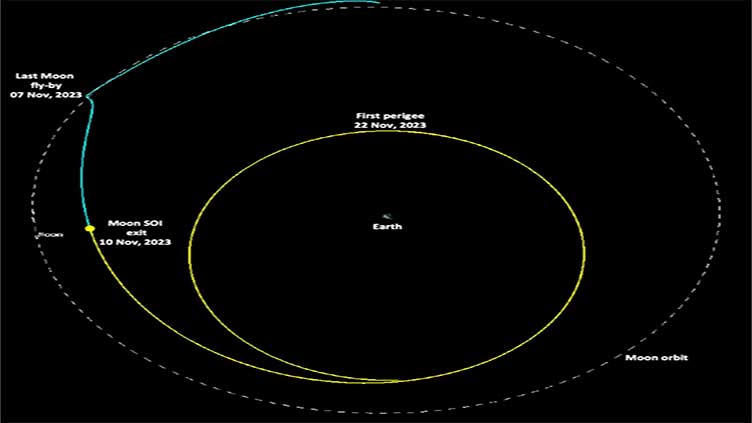Chandrayaan-3: Moon mission's rocket returns to Earth's orbit

Technology
The propulsion module had detached from the Vikram lander after ferrying it close to the Moon
(Web Desk) - India's space agency Isro says it has successfully brought back into Earth's orbit a part of the rocket that carried its historic Moon mission recently.
The "propulsion module" had detached from the Vikram lander after ferrying it close to the Moon where it finally touched down on 23 August.
After a series of complex manoeuvres, the module re-entered Earth's orbit.
The experiment is significant for Isro's plans to bring back manned missions in the future.
The module will continue to keep an eye on Earth from its new perch, Isro said.
When Chandrayaan-3's lander, carrying the Pragyaan rover in its belly, touched down, India became the first country to land near the little-explored lunar south pole region.
It also joined an elite club of countries to achieve a soft landing on the Moon, after the US, the former Soviet Union and China.
The propulsion module, meanwhile, continued to orbit the Moon, keeping an eye on Earth through a scientific instrument it's carrying - Spectro-polarimetry of HAbitable Planet Earth (SHAPE) - and capturing and sending information back to Isro.
The space agency says that after it had operated in the lunar orbit for a month, the propulsion module still had more than 100kg of fuel and it was decided to use it to carry out some "unique experiments" that will help provide "additional information" for future lunar missions.
"When the lander separated from the propulsion module, it was in a very tight orbit around the Moon," says Mila Mitra, a former Nasa scientist and co-founder of Stem and Space, a Delhi-based space education company.
So, the module's complex multi-step reverse journey began on 9 October and the first step involved increasing the orbit from 150km to 5,112km.



